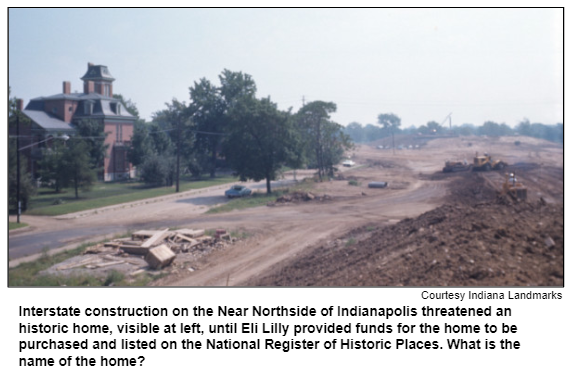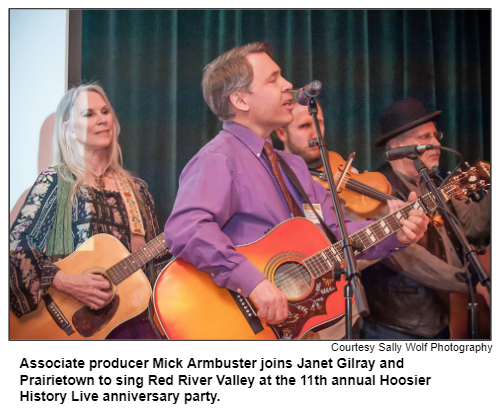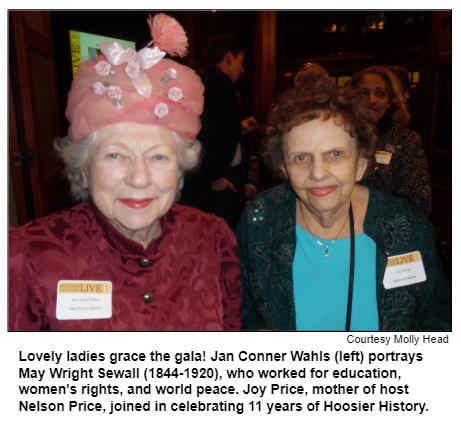
Saturdays, noon to 1 p.m. ET on WICR 88.7 FM.
Or listen live from anywhere on WICR Online!
Our call-in number during the show: (317) 788-3314
March 9, 2019
Interstate highway construction and its impact on Indianapolis
It's the largest engineered structure humans have ever built, covering a land mass the size of the state of Delaware. Along with the Great Wall of China, it's one of the few human creations that can be seen from space. In its entire length, it stretches 46,876 miles.
And you probably use it on a regular, if not daily, basis.

And while the nation's extensive network of well-engineered Interstate highways, which took over four decades to build, has brought undeniable benefits in the form of greater road safety and efficiency for personal travel and commerce, there's a darker side to the story.
Often unacknowledged by lovers of the open road are the high costs that Interstate highway construction wrought upon urban centers, where tens of thousands of American citizens lost their property to eminent domain, saw their neighborhood houses, schools and businesses bulldozed, and found themselves living next to an endless stream of noisy traffic.
Hoosier History Live associate producer and guest host Mick Armbruster will delve into the impact of Interstate construction on the city of Indianapolis, looking at how it disrupted the lives of urban residents during the building phase and had long-lasting, far-reaching impacts on the city's development. Joining Mick in studio to discuss Indianapolis highway history will be:
- Jordan Ryan, who serves as Architectural Archivist and Curator of the City Bicentennjal project at the Indiana Historical Society. Jordan has conducted archival research into routing decisions made during the Interstate planning process in the late 1950s that brought the combined 65/70 inner loop to downtown Indianapolis, examining how those choices affected urban neighborhoods.
- Paula Brooks, who as a child experienced firsthand the impact of Interstate construction on her Indianapolis neighborhood, Ransom Place. She is involved in current advocacy efforts regarding environmental justice and also works with Rethink 65/70, which seeks to influence plans by the Indiana Department of Transportation to redesign the Interstate 65/70 inner loop.
- And Garry Chillufo, founding member and current president of Historic Urban Neighborhoods of Indianapolis (HUNI), a coalition that supports older neighborhoods by working with local government and serving as a forum for urban residents. Garry is also involved with the work of Rethink 65/70.
The dream of a national highway system that would unite the sprawling territory of the United States goes back all the way to the founding fathers; it was President Thomas Jefferson who signed the act establishing a National Road in 1806, with the goal of connecting the Potomac River at Cumberland, Maryland, to the Ohio River at Wheeling, Virginia (now West Virginia).
But it was the explosion of automobile ownership in the 1920s that spurred the massive growth in paved, graded highways that could accommodate high volumes of traffic traveling at ever increasing speeds.
Road building did not stall out during the Great Depression, thanks to billions provided by New Deal programs that put drought-stricken farmers to work constructing hundreds of miles of new highways. But it was during the era of post-war prosperity in the 1950s, with automobile ownership rising faster than the tail fins on Cadillacs, that highway construction got into high gear.

But Eisenhower never envisioned the Interstate highways reaching into the inner urban core. Modeled on the Autobahn, his proposed system would have carried traffic only between and around cities, not through them.
Under pressure from members of Congress, however, who believed that urban freeway segments were essential to the needs of their constituents, Eisenhower relented and went forward with plans that brought major highways through the heart of America's cities - and left destruction and social upheaval in their wake.
Some Interstate history facts:
- The Interstate highway system is the biggest public works project in the history of the United States.
- Missouri was the first state to begin building a segment of Interstate highway, reconfiguring U.S. 40 into what was later designated the I-70 Mark Twain Expressway. The work began on on August 13, 1956.
- In 2002, native Hoosier David Letterman launched a humorous campaign to rename I-465 in his honor. "Honest to God, would it kill ya to do this?" the comedian asked in reference to renaming the roadway the "David Letterman Expressway."
Roadtrip: The National Road and Terre Haute
Guest Roadtripper Glory-June Greiff invites us on a journey to explore the National Road, the nation's first truly interstate highway. In Indiana, the National Road runs from Richmond westward through Indianapolis and on to Illinois through Terre Haute, crossing the Wabash into West Terre Haute.
Terre Haute makes a great destination, but Glory-June suggests we make the most of the journey by taking our time as we travel along US40, which traces the course of the original National Road and reveals much of its 189 years of history. A good place to start is the Oasis Diner, moved from its earlier location four miles away to a new spot in downtown Plainfield. Glory-June says it's a great place to eat and soak up the 1950s-era vibe.
Other interesting stops for history-minded Roadtrippers traveling the old National Road include 19th century inns and great old houses, like Rising Hall west of Stilesville. Take time to check out the Clay County Courthouse (listed in the National Register) in downtown Brazil. And while you're there, stop by Lynn's Old Fashioned Soda Parlor at Lynn's Pharmacy.
Upon reaching Terre Haute, you have a wealth of things to see! Glory-June tells us that the new Vigo County Historical Society museum is soon to open on Wabash Avenue (US40), just across the street from the Clabber Girl Museum. A little farther west, on 7th Street, is the Swope Museum of Art, in sight of the glorious Indiana Theater, an old movie palace and architectural treasure.
In need of a pick-me-up before heading home? Glory-June recommends the Corner Grind on the corner of 7th and Wabash, a great coffee house adjacent to its sister business, the Cornerstone Cafe, featuring tasty sandwiches and soups.
That's just a taste of the many great things to do and see in Terre Haute; plenty of reasons to return!
History Mystery
Interstate construction in downtown Indianapolis in the late 1960s and early 1970s required the demolition of dozens of historic buildings. One building on the city's Old Northside came close to destruction but was saved by the intercession of Eli Lilly, grandson of Colonel Eli Lilly - the pharmacist, chemist, and businessman who founded Eli Lilly and Company. The architecturally distinctive home, designed in the Second Empire style, was built in the 1860s and served over the years as the residence of two notable Indianapolis families, whose names the building is now known by.
The home was slated for demolition to make way for Interstate 65 construction when Eli Lilly, who had lived in a nearby home in the 1920s, provided money to have it purchased by the Historic Landmarks Foundation of Indiana (now Indiana Landmarks) and listed in the National Register of Historic Places. Because federal dollars were funding the Interstate construction, the route had to be moved south and the home was saved.The home has been restored and serves as a venue for Indiana Landmarks programs, special events, and private rentals.
Question: What is the name of the historic home in the Old Northside neighborhood of Indianapolis that was in the pathway of Interstate 65 but was saved by the intercession of Eli Lilly?
Please do not call in to the show until you hear Mick pose the question on the air, and please do not try to win if you have won any other prize on WICR during the last two months. You must be willing to give your first name to our engineer, you must answer the question correctly on the air and you must be willing to give your mailing address to our engineer so we can mail the prize pack to you. The prize is a pair of tickets to the historic Athenaeum Tour, courtesy of Indiana Landmarks, and a certificate to Story Inn in Brown County, courtesy of Story Inn.
Please email molly@hoosierhistorylive.org if your business or organization would like to offer History Mystery prizes that can be easily mailed to contest winners.
Party like it's 1899!
Annual bash celebrates 11 Years of making Hoosier History!
Thanks again to our special sponsors of Hoosier History Live 11th anniversary party: James and Marjorie Kienle and the Society of Indiana Pioneers.
Nelson Price, host and historian
Molly Head, producer/project manager, (317) 927-9101
Michael Armbruster, associate producer
Cheryl Lamb, administrative manager
Richard Sullivan, senior tech consultant
Pam Fraizer, graphic designer
Garry Chilluffo, special events consultant
Please tell our sponsors that you appreciate their support!

 Acknowledgments to Monomedia, Visit Indy, WICR-FM, Fraizer Designs, Heritage Photo & Research Services, Henri Pensis, Aaron Duvall, Chloe Tyson, and many other individuals and organizations. We are independently produced and are self-supporting through organizational sponsorship and through individual contribution at the yellow button on our newsletter or website. For organizational sponsorship, which includes logos, links, and voiced credits in the show, contact Molly Head at (317) 927-9101 or email her at molly@hoosierhistorylive.org. Our media reach continues to grow via podcasting and iTunes.
Acknowledgments to Monomedia, Visit Indy, WICR-FM, Fraizer Designs, Heritage Photo & Research Services, Henri Pensis, Aaron Duvall, Chloe Tyson, and many other individuals and organizations. We are independently produced and are self-supporting through organizational sponsorship and through individual contribution at the yellow button on our newsletter or website. For organizational sponsorship, which includes logos, links, and voiced credits in the show, contact Molly Head at (317) 927-9101 or email her at molly@hoosierhistorylive.org. Our media reach continues to grow via podcasting and iTunes.
Thank you!
We'd like to thank the following recent, new and renewal contributors whose donations help make this show possible!
- John and Diane Iozzo
- Marjorie and James Kienle
- Tom and Linda Castaldi
- Julie Slaymaker
- Joe Young
- Andy Hein
- Georgia Cravey and Jim Lingenfelter
- Lorraine and Richard Vavul
- Steve and Marilyn Barnett
- Aleta Hodge
- Jeanne Blake
- Perry and Melanie Hammock
- Jim and Bonnie Carter
- Barbara and Michael Homoya
- Noraleen Young
- Barbara Wellnitz
March 16, 2019 - coming up
Ask Nelson - plus the founding of Heartland Film Festival, Twin Aire history and more
Periodically on Hoosier History Live, we open the phone lines so listeners can inquire about any aspect of our state's heritage.
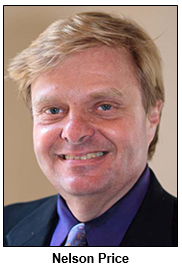 This time around, our host Nelson Price is joined by Indianapolis civic leader Jeff Sparks, who founded the Heartland Film Festival in the early 1990s to celebrate "life-affirming" movies and oversaw its evolution into a major cultural event. During the 1980s, Jeff helped launch the New Harmony Project, which brings playwrights and screenwriters to the historic town of New Harmony in southwestern Indiana to develop new works in a scenic, tranquil setting on the Wabash River.
This time around, our host Nelson Price is joined by Indianapolis civic leader Jeff Sparks, who founded the Heartland Film Festival in the early 1990s to celebrate "life-affirming" movies and oversaw its evolution into a major cultural event. During the 1980s, Jeff helped launch the New Harmony Project, which brings playwrights and screenwriters to the historic town of New Harmony in southwestern Indiana to develop new works in a scenic, tranquil setting on the Wabash River.
Since stepping down as Heartland's CEO in 2013, Jeff has been involved in the revitalization of Twin Aire, a neighborhood on the southeastside of Indianapolis that's been in the news because it will be the site of the Indianapolis Community Justice Campus, including the Marion County courts.
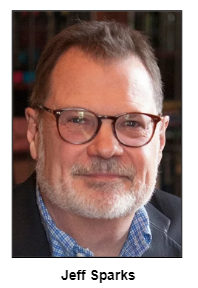
At any point during the show, listeners are invited to call in with questions for Jeff or Nelson; the WICR-FM studio number is (317) 788-3314.
As we spotlight Women's History Month, Jeff will interview Nelson about some notable Hoosier women, including a World War II aviator who is featured in the bestselling book The Greatest Generation.
Nelson also plans to describe the history of Ellenberger Park, the hilly, sprawling park near Irvington on the eastside of Indy. We intended to spotlight historic Ellenberger during several shows a while back, including a program about the histories of various city parks, but ran short on time.Twin Aire, long known for a drive-in movie theater and, in the 1950s, the site of one of the city's first strip shopping centers, has had "a crying need for new businesses," as Jeff puts it in Changing Culture Through Stories. Jeff's involvement began as a board member of Southeast Neighborhood Development Inc. (SEND), a community development organization.
Jeff is most closely identified with Heartland, which grew to involve more than 1,000 volunteers annually. When Jeff began planning to launch a film festival, he only had attended one of them - the Sundance Film Festival in Utah - just once. During our show, Nelson will ask Jeff about the involvement in Heartland of some Hollywood notables with Indiana connections, including Oscar-winning director Sydney Pollack (1934- 2008), whose credits included Tootsie (1982), Out of Africa (1985) and The Way We Were (1973).
© 2019 Hoosier History Live. All rights reserved.
|


